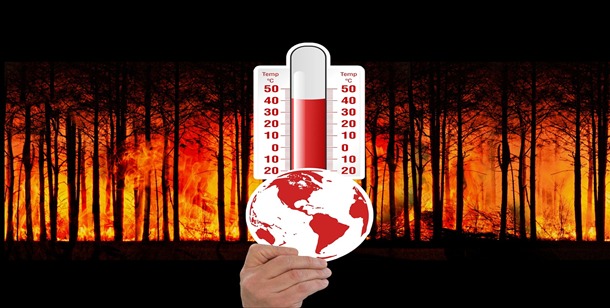Pakistan Located in South Asia, is a country that is highly vulnerable to the impacts of climate change due to its geographic location and unique topography. The country experiences a wide range of climate-related challenges, including increased frequency and intensity of natural disasters such as floods, droughts, and heatwaves. These extreme weather events not only result in loss of lives and property but also have long-term implications for the country’s economy and society. Additionally, rising sea levels pose a threat to coastal areas, leading to erosion, salinity intrusion, and displacement of communities.
Pakistan, like many other countries in the world, is facing the profound impacts of climate change. From extreme weather events to rising sea levels, the climate crisis is posing significant challenges to Pakistan’s environment, economy, and society. In recent years, Pakistan has witnessed a surge in natural disasters such as floods and heatwaves, exacerbating existing vulnerabilities for its population. Pakistan’s struggle with the climate crisis by examining the current challenges, impacts, and potential solutions to mitigate the effects of climate change.
According to a study by the World Bank, Pakistan is one of the top ten countries most affected by floods globally. The devastating floods in 2010 and 2011 caused massive destruction, displacing millions of people and causing significant economic losses. The frequency of such extreme weather events is expect to rise in the future, posing a significant challenge to Pakistan’s disaster management capabilities and infrastructure.
The effects of climate change on Pakistan are wide-ranging and severe. One of the most pressing issues facing the country is water scarcity. Pakistan relies heavily on its rivers, particularly the Indus River, for agriculture, industry, and domestic use. However, due to erratic weather patterns and glacial melt, water resources are becoming increasingly scarce. This has led to conflicts over water access between provinces and has put immense pressure on the agricultural sector, which forms the backbone of Pakistan’s economy.
Pakistan is an agrarian economy where agriculture contributes significantly to its GDP and employs a large portion of the population. The agriculture sector heavily relies on irrigation water, and the rivers in Pakistan play a vital role in providing this precious resource. Among these rivers, the Indus River stands out as the lifeline of Pakistan’s agriculture, industry, and domestic water supply. Its tributaries, including the Jhelum, Chenab, Ravi, and Sutlej rivers, further enhance the agricultural productivity of the region.
The agricultural sector in Pakistan heavily depends on the water from the rivers, particularly the Indus River, for irrigation purposes. Over 90% of Pakistan’s agriculture is sustain by irrigation, and the Indus Basin Irrigation System is the largest contiguous irrigation system globally. The river water is channel through an extensive network of canals and barrages, ensuring a consistent water supply to various agricultural regions in the country. The fertile plains surrounding the Indus River basin have made Pakistan a major producer of crops like wheat, rice, sugarcane, and cotton, which are crucial for the economy and food security of the nation.
Moreover, extreme weather events such as floods and droughts have become more frequent and intense in Pakistan. The 2010 floods, considered one of the worst natural disasters in the country’s history, affected millions of people and caused significant damage to infrastructure and agriculture. Conversely, prolonged droughts have led to crop failures, food insecurity, and displacement of communities in arid regions of Pakistan. These extreme events not only disrupt livelihoods but also contribute to social unrest and exacerbate poverty in the country.
The rivers in Pakistan also cater to the domestic water needs of the population, especially in urban and rural areas. As the population grows, the demand for clean drinking water increases, and rivers like the Indus play a crucial role in meeting this demand. Moreover, the rivers serve as a source of water for household chores, sanitation, and other daily activities. However, the quality of water in these rivers has become a concern due to pollution from industrial effluents, agriculture runoff, and untreated sewage, highlighting the need for sustainable water management practices.
In addition to water scarcity and extreme weather events, Pakistan is also experiencing the impacts of rising temperatures. Heatwaves have become more common, leading to heat- related illnesses and deaths, particularly in urban areas with inadequate infrastructure and limited access to cooling facilities. The health impacts of climate change, including the spread of vector-borne diseases and air pollution, further compound the challenges faced by Pakistan’s healthcare system.
To address these challenges, Pakistan needs to implement robust adaptation and mitigation strategies. Investing in renewable and wind power can help reduce the country’s reliance on fossil fuels and lower its greenhouse gas emissions. Improving water management practices, including rainwater harvesting and efficient irrigation systems can enhance water security and build resilience to droughts and floods. Strengthening early warning systems, disaster preparedness, and community-based adaptation measures are also critical to reducing the impacts of climate change on vulnerable populations in Pakistan.
The country is experiencing higher temperatures, particularly during the summer months, which not only affect human health but also have implications for energy consumption and cooling requirements. Heatwaves have become more frequent, leading to heat-related illnesses and deaths, especially among vulnerable populations such as the elderly and children. The lack of adequate infrastructure and resources to cope with extreme heat poses a significant challenge to Pakistan’s public health system.
Pakistan is confronting a complex set of challenges due to the climate crisis, which threatens the country’s environment, economy, and social well-being. The effects of climate change, including water scarcity, extreme weather events, and rising temperatures, an exacerbating existing vulnerabilities and posing significant risks to Pakistan’s sustainable development. By implementing effective adaptation and mitigation measures, Pakistan can work towards building a more resilient and climate-resilient future for its people. It is imperative for policymakers, civil society, and international partners to collaborate on addressing the climate crisis and safeguarding the future of Pakistan and its citizens.

